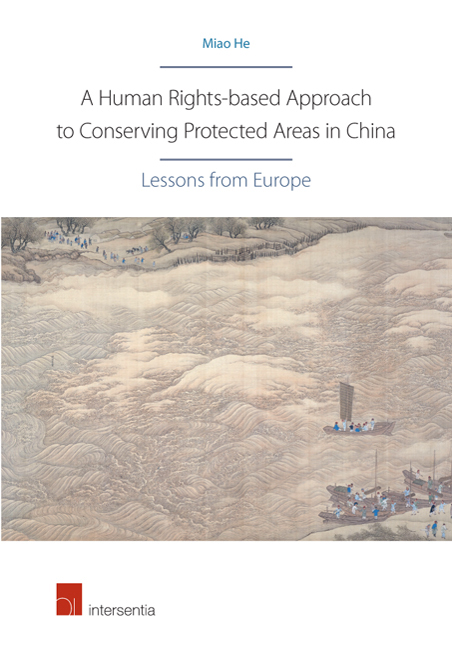Book contents
- Frontmatter
- Contents
- List of Abbreviations
- PART I INTRODUCTION AND BACKGROUND
- PART II ANALYSIS OF THE RELATIONSHIP BETWEEN HUMAN RIGHTS AND PROTECTED AREAS CONSERVATION IN CHINA AND IN EUROPE
- PART III IMPLEMENTATION AND GENERAL CONCLUSION
- Chapter 7 Implementing a Human Rights-Based Approach in Protected Areas Conservation in China
- Chapter 8 General Conclusion and Outlook
- References
Chapter 8 - General Conclusion and Outlook
from PART III - IMPLEMENTATION AND GENERAL CONCLUSION
Published online by Cambridge University Press: 22 September 2018
- Frontmatter
- Contents
- List of Abbreviations
- PART I INTRODUCTION AND BACKGROUND
- PART II ANALYSIS OF THE RELATIONSHIP BETWEEN HUMAN RIGHTS AND PROTECTED AREAS CONSERVATION IN CHINA AND IN EUROPE
- PART III IMPLEMENTATION AND GENERAL CONCLUSION
- Chapter 7 Implementing a Human Rights-Based Approach in Protected Areas Conservation in China
- Chapter 8 General Conclusion and Outlook
- References
Summary
GENERAL CONCLUSION
It is widely acknowledged that protected areas are not only a means for the protection of the natural environment, but also a means for achieving harmony between humans and nature. Increasingly, it is also recognised that protected areas cannot be seen in isolation from the communities that have inhabited or used their resources, nor can many of them be seen only as wildlife conservation sites, given that these communities may perceive the same areas as cultural landscapes or areas for essential survival. Various sections of society may value the same area differently, and there is no single “right” way to achieve conservation. As Brockington, Igoe and Schmidt-Soltau state, “the ultimate challenge facing conservationists today is not only to reconcile errors of the past but also to determine how to shape human interactions with nature in landscapes of which people are a part.” The conservation and management of protected areas have long discussed “balancing” the needs of different stakeholders when in reality win-win situations are difficult to realise.
This book has explored how to adopt a rights-based approach to conserve protected areas to achieve a better balance between human rights protection and protected areas conservation in China. It has provided adequate answers to three sub-research questions: (1) What is the added value of a human rights-based approach to conservation? (2) How to solve the potential conflicts regarding human rights protection and protected areas conservation in China according to some principal lessons learned from Europe? (3) Based on the experiences and lessons learned from the legal systems and case law in Europe, how to implement a human rights-based approach in protected areas conservation in China?
Rather than predicting the developmental tendency between human rights protection and environmental protection or debating whether a right to an environment would be widely accepted or not, it would be practical to find a better balanced approach to solve the existing conflicts regarding human rights protection and environmental protection based on the existing linkages between these two issues at the international level. In essence, a human rights based approach could be regarded as both a means and an end: protecting the environment, in particular conserving protected areas, is ultimately about making sure that everyone's human rights are met.
- Type
- Chapter
- Information
- A Human Rights-based Approach to Conserving Protected Areas in ChinaLessons from Europe, pp. 353 - 358Publisher: IntersentiaPrint publication year: 2016



